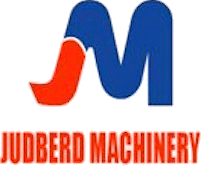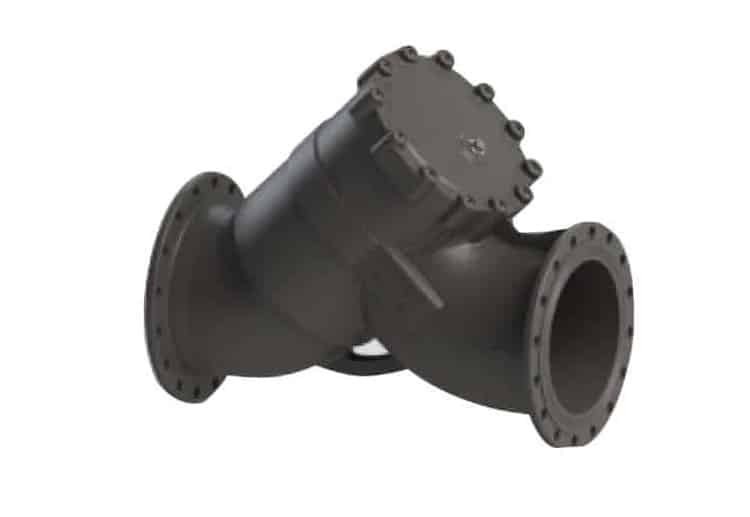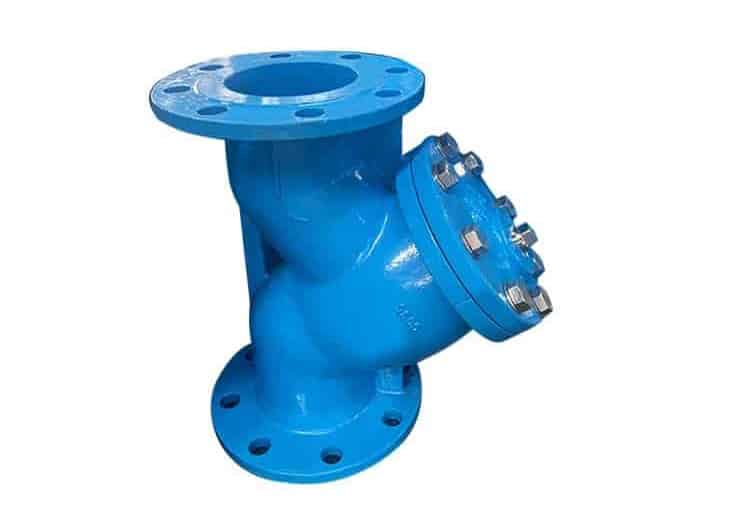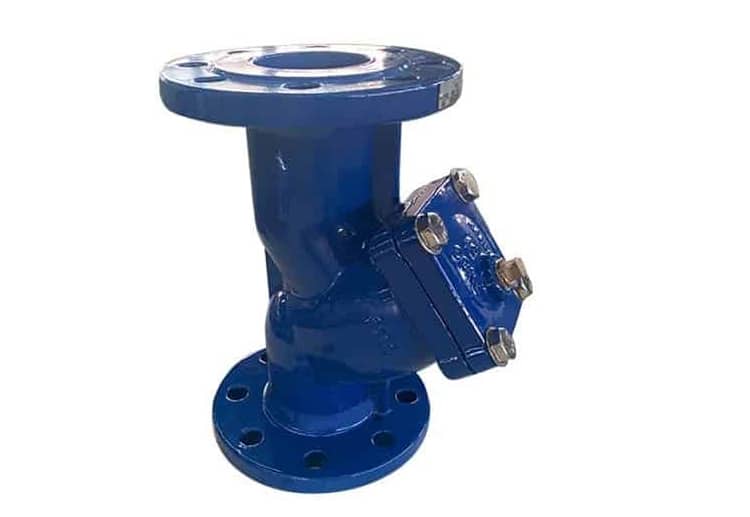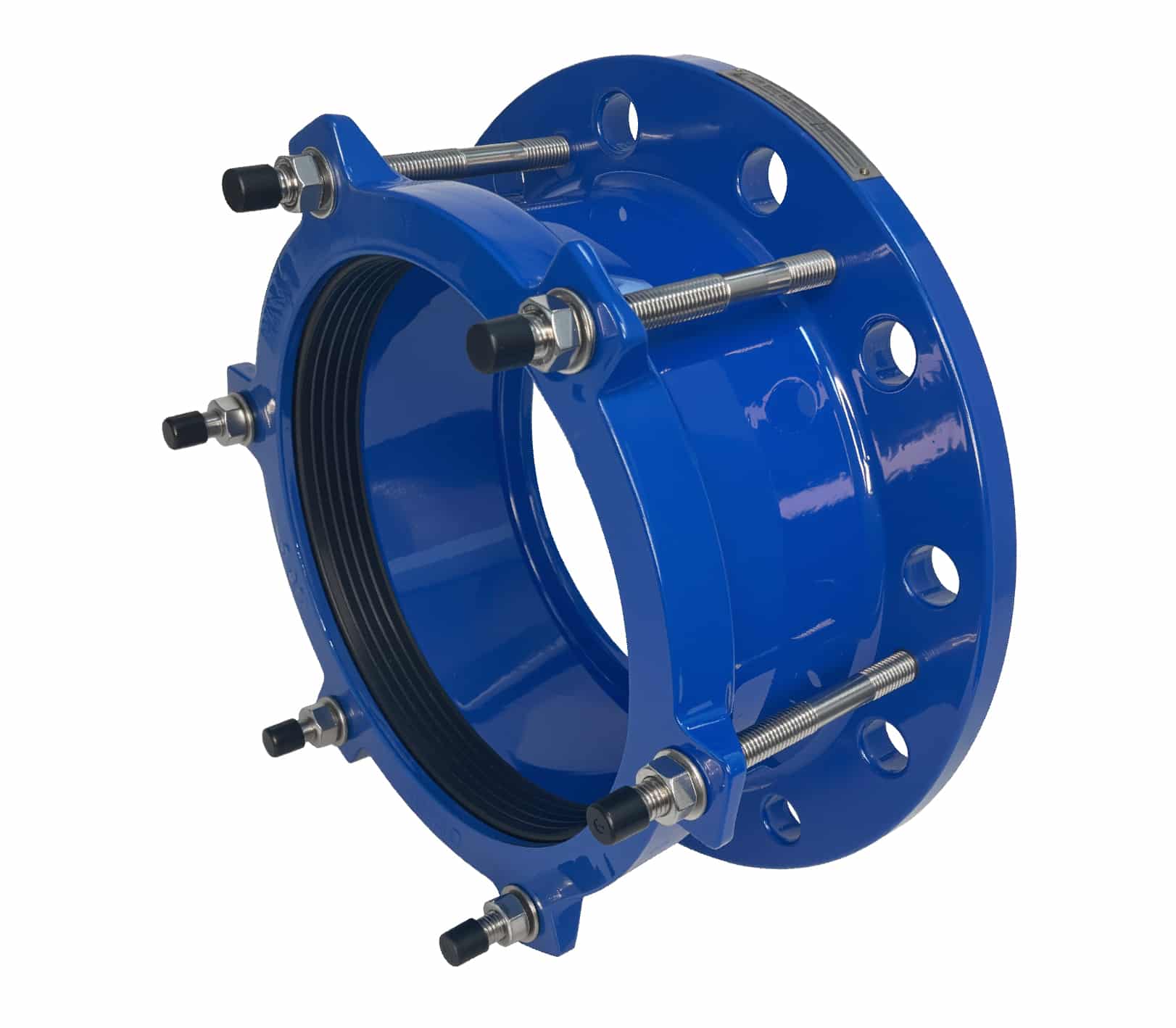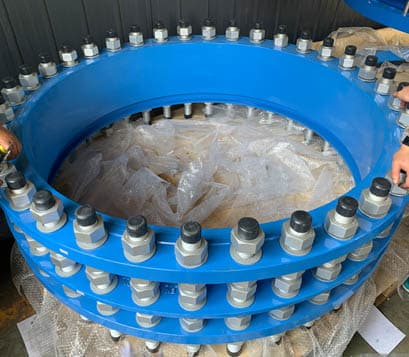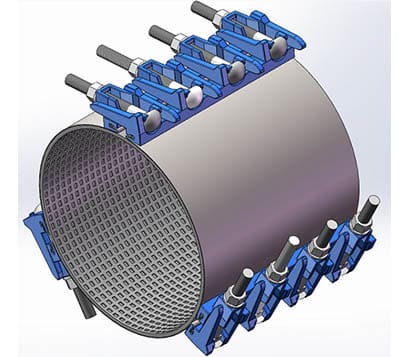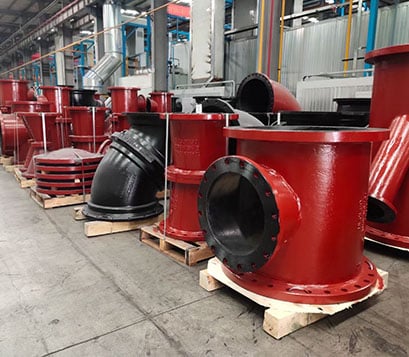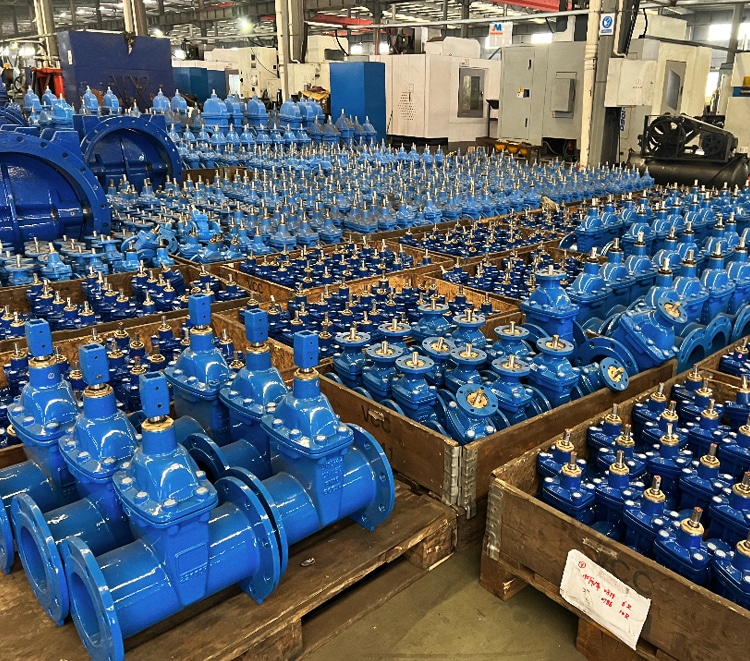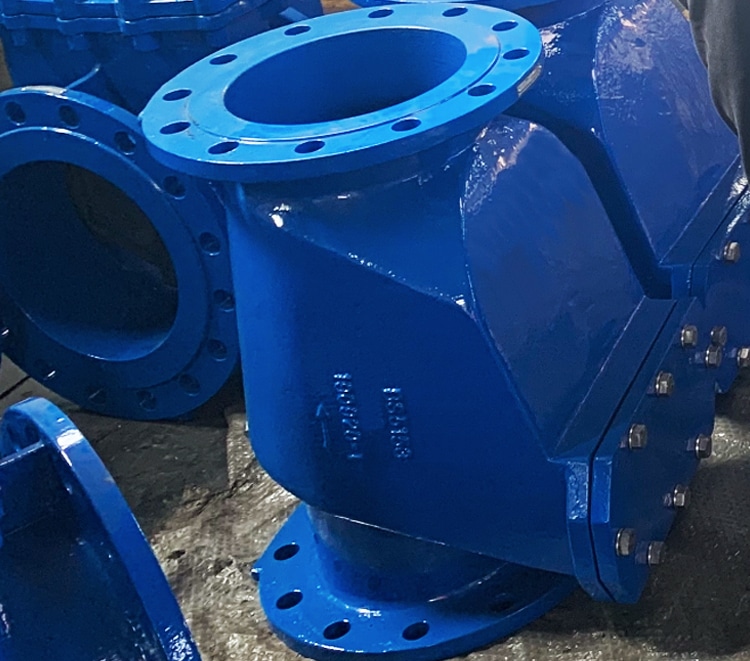Y strainer
Y strainer is a mechanical device used to remove solid particles from liquids, gases, or steam in a pipeline. It features a Y-shaped design with a mesh filter that traps debris, protecting downstream equipment from damage and ensuring smooth system operation.
As professional manufacturer in china for Y strainer, Judberd can manufacture below Y strainers.
Advantage of Judberd Strainer
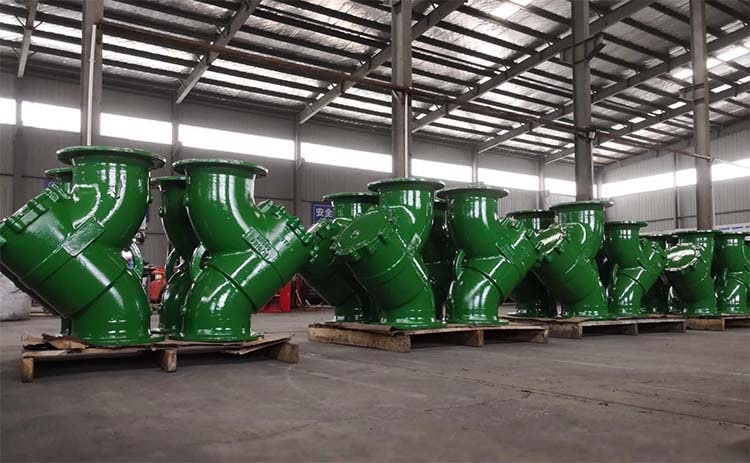
1,Full port design to reduce water head loss
2,When DN≥200 or bigger, the net has stainless steel internal and external
Reinforcement bars to avoid the impact of water flow to destroy the screen.
3,The valve body is designed with a lifting structure to facilitate installation and hanging operation
4,The mesh of the screen can be customized
5,The area of the filter is 3-3.5times of the valve diameter, big filter area reduces flow resistance
6,In the plug, we use a common BSP thread or a female thread that meets the requirements of the local market, so that the customer can buy a ball valve with a male thread to connect with the thread in the plug, so that the ball valve can be opened to eliminate impurities in the filter For cleaning, no need to disassemble the plug
How do we inspect our Strainer?
Pressure test for basket strainer
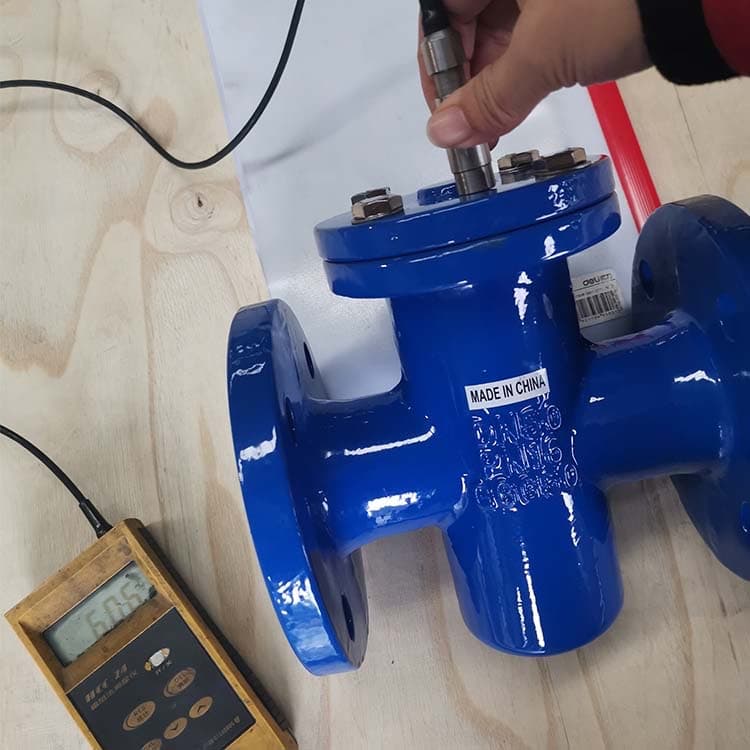
Coating thickness test for basket strainer
What is Y strainer and how they work?
Y type strainer is an indispensable filtering device for pipeline system of transporting fluid or gas, Y-type strainer is usually installed at the inlet end of pump, pressure reducing valve, pressure relief valve or other equipment to remove impurities in fluid or gas in order to protect pump, valve and other pipeline components . Generally, the filter mesh for water is 18~30 , the filter mesh for gas is 10~100 and the filter mesh for oil is 100~480.The Y strainer is mainly composed of body, bonnet, screen, gasket, plug and bolts as the below y strainer diagram. When the liquid or gas enters the filter through the main pipe, the solid impurity particles are blocked in the filter, while the clean fluid or gas is discharged through the filter and flow out from the filter outlet end.
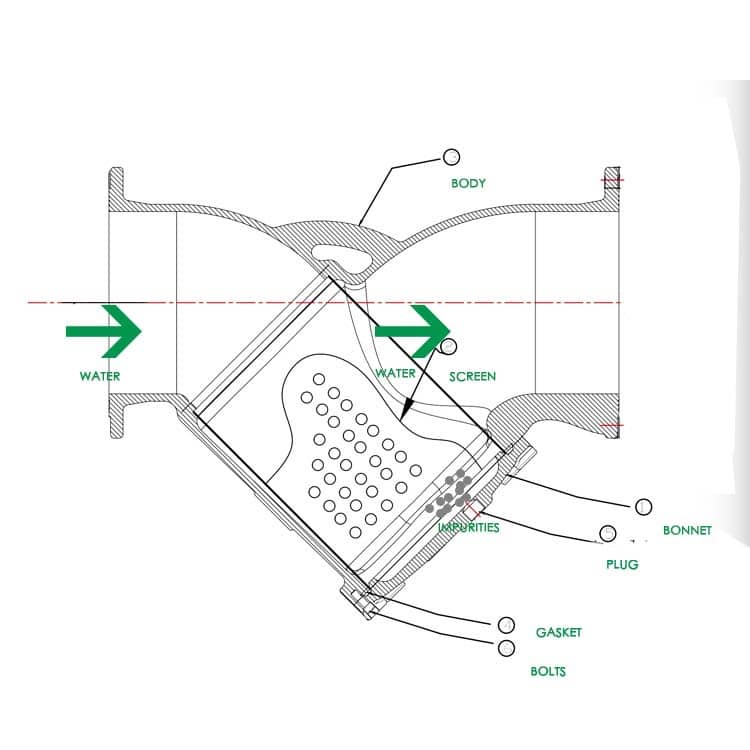
Y Strainer Design
Why Y strainer is called Y strainer because it is shaped like the letter Y(as the right photo). Compared to the T design, the Y design facilitates the flow of liquid and reduces head loss because it is less obstructive to the liquid. This design filters impurities well while ensuring the flow of the liquid and minimizing pressure reduction, and allows impurities to slide down the screen to the bottom of the screen, thus opening the plug for cleaning.
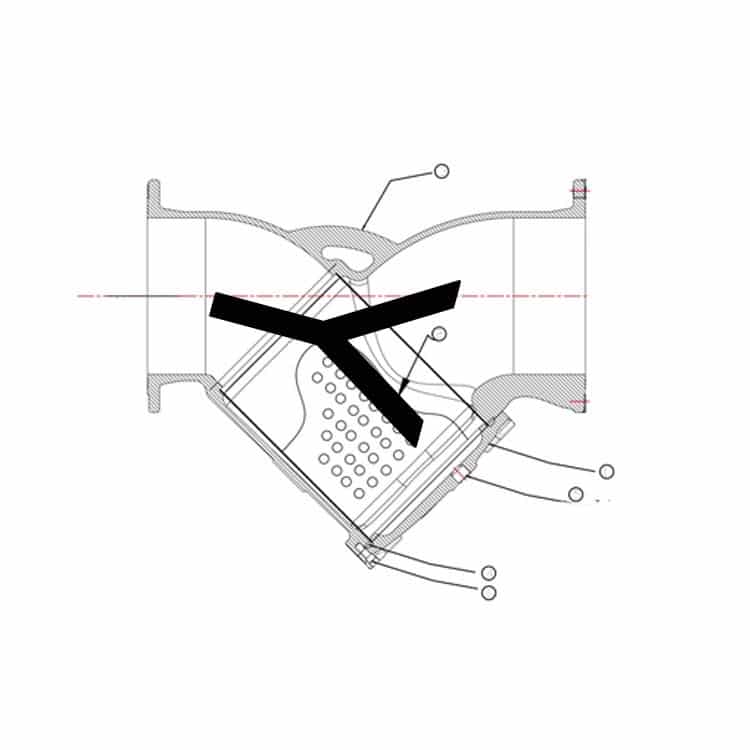
What is the most important part for Y strainer?
The screen is the most import part for Y strainer.The screen material ,thickness and mesh size decide the Y strainer’s warranty time, what size solid they can filter out.
How to choose the right screen for Y strainer?
The filter mesh decide the particle size or coarseness of the material.
The general definition of filter mesh is how many mesh numbers in an area of 1 inch * 1 inch, i.e. the number of mesh of the screen: for example, 200 mesh, is that the screen with 200 mesh holes in 1 inch * 1 inch area.
The larger the mesh size, the smaller the hole size, the smaller the mesh size, the larger the hole size.
Screen hole size: 4.75mm – standard mesh : 4 mesh
Screen hole size: 4.00mm – standard mesh: 5 mesh
Screen hole size: 3.35mm – standard mesh : 6 mesh
Screen hole size: 2.80mm – standard mesh: 7 mesh
Screen hole size: 2.36mm – standard mesh: 8 mesh
Screen hole size: 2.00mm – standard mesh: 10 mesh
Screen hole size: 1.70mm – standard mesh: 12 mesh
Screen hole size: 1.40mm – standard mesh: 14 mesh
Screen hole size: 1.18mm – standard mesh : 16 mesh
Screen hole size: 1.00mm – standard mesh : 18 mesh
Screen hole size: 0.850mm – standard mesh: 20 mesh
Screen hole size: 0.710mm – standard mesh: 25 mesh
Screen hole size: 0.600mm – standard mesh: 30 mesh
Screen hole size: 0.500mm – standard mesh: 35 mesh
Screen hole size: 0.425mm – standard mesh: 40 mesh
Screen hole size: 0.355mm – standard mesh : 45 mesh
Screen hole size: 0.300mm – standard mesh: 50 mesh
Screen hole size: 0.250mm – standard mesh: 60 mesh
Screen hole size: 0.212mm – standard mesh: 70 mesh
Screen hole size: 0.180mm – standard mesh: 80 mesh
Screen hole size: 0.150mm – standard mesh: 100 mesh
Screen hole size: 0.125mm – standard mesh: 120 mesh
Screen hole size: 0.106mm – standard mesh: 140 mesh
Screen hole size: 0.090mm – standard mesh: 170 mesh
Screen hole size: 0.0750mm – standard mesh: 200 mesh
Screen hole size: 0.0630mm – standard mesh : 230 mesh
Screen hole size: 0.0530mm – standard mesh: 270 mesh
Screen hole size: 0.0450mm – standard mesh: 325 mesh
The above refers to the US standard for filter mesh size , if it is Taylor’s size there will be differences.
As you can see from the definition of mesh, the size of the mesh determines the size of the aperture of the screen. As we can see, it is entirely possible to have very fine particles, for example only 1-2 microns, or 10 or 20 microns, if you reach 400 mesh or bigger.
If you choose a filter mesh that is too large (too small for filter hole diameter), it will easily block the flow of water, resulting in lower pressure or even block pipes. If you choose a filter mesh that is too small (filter hole diameter is too large), then you will not be able to filter out the impurities sufficiently, which will cause damage to the downstream pumps ,valves and other components.For example, the filter mesh in the foot valve should be smaller than the Y strainer filter mesh which is following, because foot valve strainer should filter out large impurities and it should ensure don’t get self blocked, but for the following Y strainer ,It is necessary to filter out small impurities that are not filtered out by the filter screen of the foot valve . Customers should choose the appropriate filter mesh according to the actual situation ,if you need technical help, you also can contact us for suggestion.

How to choose the right Y strainer?
In the market, the working principle of Y-strainer is the same, but when choosing it, it is necessary to pay attention to the difference in the scope of use and environment of Y-strainer with different product parameters.
The requirements of medium temperature, working pressure difference, product material, applicable range, connection form, flow direction, applicable medium pressure environment requirements and so on these basic parameters must be known. After understanding these parameters before purchase, further judgment and selection can be made to choose a more suitable Y-type strainer.
1. Suitable inlet and outlet diameter
In principle, the import and export diameter of Y-type strainer should not be smaller than the pipe diameter, and it is generally the best to be consistent with the diameter of import pipeline.
2. Casting material of Y-type strainer
The second step in choosing Y-type strainer is the material. Because different materials have different physical and chemical properties. The material of the Y strainer you choose should generally be the same as the material of the process pipeline connected with it. For different working conditions, you can specifically choose the Y filter made of cast iron, brass, low alloy steel, carbon steel ,stainless steel or PVC.
3. Selection of the number of holes in the screen
The core working mechanism of Y-type strainer is the filter screen. Therefore, when selecting a Y strainer, special consideration should be given to the size and number of pores of the screen to intercept impurities. This choice is generally assisted by a special “size comparison table” for intercepting particles. Once you have considered your interception needs, choosing the right screen is the most important thing.
In addition, there are differences such as nominal pressure, filter resistance loss ……, etc., which are also important considerations when choosing a first-class Y-strainer, as they relate to the maximum pressure that the filtering path can withstand and the service life of the Y-strainer, and should not be ignored.
Y strainer installation position
The y type strainer is usually installed at the inlet of a pump, safety valve, relief valve, water level valve or other equipment to remove impurities from the media to protect the valve and equipments.
How to install Y strainer?
First of all, before installation, if it is the threaded end of the Y-strainer, the threaded connection surface of all pipes of the Y-strainer should be carefully cleaned, and the use of pipe sealant or Teflon tape (Teflon) should be moderate. The threads at the end should be left untreated to avoid allowing sealant or Teflon tape to enter the piping system. If it is a flange end Y strainer, it is necessary to check whether the standard of the flange, pressure, etc. is compatible with the flange to be connected with it in the pipeline.
Secondly, the Y-strainer can be installed horizontally or vertically downwards. The direction of water flow must be the same as the direction indicated by the arrow on the valve body. At the same time, it should be noted that the plug and the valve bonnet should be installed in a place with enough space so that the plug can be opened to eliminate impurities and the valve cover can be opened for maintenance and cleaning.Ensure the drain or blow-off is located at the lowest position when installed.If installed in the vertical position, the plug must be pointing downward to ensure that impurities can be slipped off.
Once again, it is important to pay attention to the direction of the screen for different pipes, such as the direction of the screen for gas pipes should be horizontal, while the screen for liquid pipes should be installed facing downwards.
In addition, there are many types of Y-strainers, such as light filters, air filters and liquid filters. Therefore, the installation should also be decided according to the actual situation of different kinds of Y-strainers.
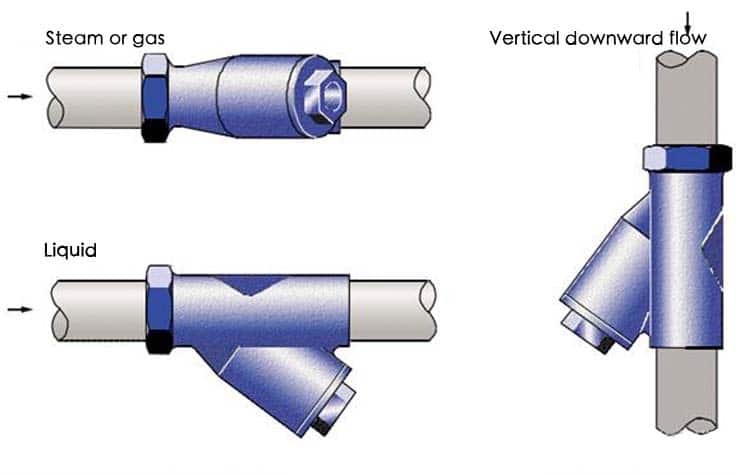
How to clean Y strainer?
Choose the time to clean the impurities according to the medium of the pipeline and the amount of impurities.
There are two types of Y-strainer cleaning, one is to discharge only the impurities inside the filter, so as to ensure that the pipeline will not be blocked by too many impurities inside the filter. The other is to thoroughly clean the filter to completely remove all the impurities on the filter surface.
If it is the first one that you only need to discharge the impurities inside the filter, it is very easy to clean, if you installed a ball valve instead the plug, then you just need to open the ball valve to let fluid or gas wash the impurities out, until no impurities are washed out, close the ball valve. If you haven’t install the ball valve, then Firstly, unscrew the plug at the bottom of the screen and let the fluid or gas flush out impurities and then install the plug back.
If you want to thoroughly clean the filter to completely remove all the impurities on the filter surface, then you need to stop the fluid, remove the ball valve or plug to drain the fluid inside, disassemble the valve bonnet and remove the screen to clean the debris and dirt on it; finally, put it back in place and assembled the bonnet and plug or ball valve.
What type end connections are available for Y strainers?
Flange connections ,thread connections,weld connections,Grooved connections etc ,you can choose the right connection method according to your pipe size,pressure,media etc actual condition.
What is the most common strainers?
Y type strainer(also called wye strainer) and T type strainer(also called Tee type strainer or basket strainer),all are named by their shape.
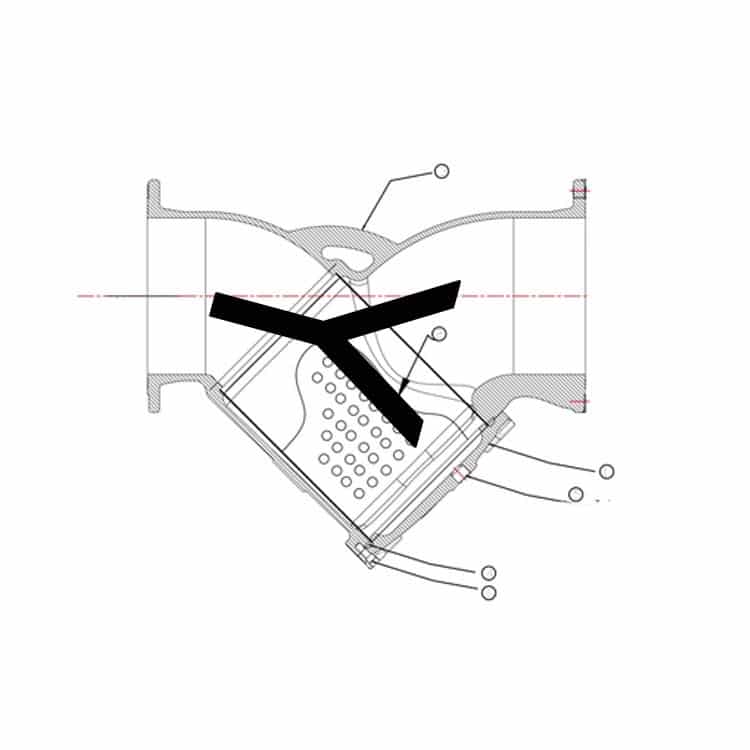
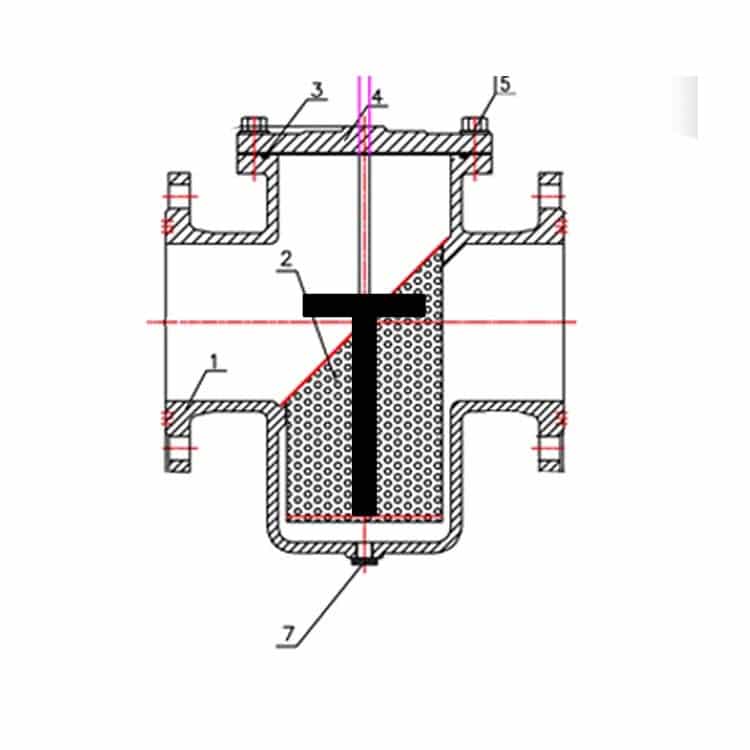
Y strainer vs T strainer
1, the shape of the Y strainer and T strainer designs are different
2, compared with the Y strainer, the T strainer has a larger filter area, and the efficiency of filtration is higher.
3, the space needed for cleaning and maintenance of y type strainer is below the filter, which is the same as the space for daily discharge of impurities. For the T strainer, we need to open the bonnet on the top and take the basket filter out from above for cleaning and maintenance, so it needs to reserve space above the bonnet of the T strainer.
Materials of Y strainers and their pressure limits, maximum operating temperatures, and working conditions
The common materials of Y strainers and their pressure limits, maximum operating temperatures, and working conditions are as below. Understanding this will help you select the appropriate material for your Y strainer.
Carbon Steel
Maximum Pressure: Typically up to 1500 psi (103 bar)
Maximum Temperature: Up to 450°F (232°C)
Applications: Suitable for general use in water, oil, and gas systems, especially where corrosion resistance is not a primary concern.
Stainless Steel (304, 316, 316L)
Maximum Pressure: Typically up to 2500 psi (172 bar)
Maximum Temperature: Up to 800°F (427°C)
Applications: Ideal for corrosive environments, such as chemical plants, food processing, and marine applications. Stainless steel 316 and 316L offer higher resistance to corrosion, especially in saline or acidic environments.
Ductile Iron
Maximum Pressure: Typically up to 300 psi (21 bar)
Maximum Temperature: Up to 250°F (121°C)
Applications: Often used in water and wastewater treatment plants, where moderate pressure and temperature are involved.
Bronze
Maximum Pressure: Typically up to 150 psi (10 bar)
Maximum Temperature: Up to 400°F (204°C)
Applications: Suitable for applications involving non-corrosive liquids and gases, such as in HVAC systems and some chemical processes.
Plastic (PVC, CPVC, Polypropylene)
Maximum Pressure: Typically up to 150 psi (10 bar)
Maximum Temperature: Up to 180°F (82°C) for PVC, higher for CPVC and polypropylene
Applications: Used for corrosive fluids in lower pressure systems, particularly in the chemical, food, and pharmaceutical industries.
Summary
The material of the Y strainer plays a significant role in determining its pressure and temperature limits. Carbon steel is common for general applications, while stainless steel is preferred for more demanding, corrosive environments. Plastic materials are used when corrosion resistance is critical but at lower pressures and temperatures.
Factors Affecting the Price of Y Strainers – A Manufacturer’s Perspective
When purchasing a Y strainer, several factors can influence its price. These include material, size, coating, and other design considerations. Below are the key factors to consider:
Material
Carbon Steel: Generally the most cost-effective material for Y strainers used in less demanding applications.
Stainless Steel (304, 316, 316L): More expensive due to its higher resistance to corrosion, making it ideal for harsh environments such as chemical, marine, or food industries.
Bronze or Ductile Iron: These materials offer good corrosion resistance but at a lower price point than stainless steel.
Plastic (PVC, CPVC, Polypropylene): These materials are more affordable but have limited temperature and pressure capabilities, suitable for specific, lower-demand applications.
Size
The larger the diameter of the Y strainer, the higher the cost. Larger sizes require more material and are more complex to manufacture.
The pressure rating is also a factor. Higher pressure rated strainers often require thicker walls and stronger materials, increasing their cost.
Coating
Corrosion-Resistant Coatings: Additional coatings such as epoxy or fusion-bonded epoxy (FBE) increase the price but offer protection in aggressive environments (e.g., offshore, chemical plants).
Anti-abrasion Coatings: For applications involving abrasive particles, coatings like polyurethane are used, adding to the cost.
Filtration Mesh and Design
The type and size of the mesh used in the Y strainer will also affect its cost. Higher filtration levels (fine mesh) require more precise manufacturing, which may increase the price.
The design complexity, such as whether the Y strainer is custom-made or has additional features (e.g., built-in bypass, larger debris collection area), can also influence the price.
Pressure and Temperature Ratings
Strainers designed to withstand higher pressure and temperature ranges require stronger materials, thicker construction, and sometimes special sealing solutions, which will raise the price.
Certifications and Standards
Compliance with industry standards (e.g., ASME, ANSI, ISO) or certifications (e.g., CE, UL) can also increase the cost, as manufacturing to these standards requires more stringent quality controls and testing.
Quantity and Lead Time
Larger orders may offer cost savings due to bulk production, while custom or urgent orders may incur additional charges for expedited manufacturing and shipping.
Summary
When purchasing a Y strainer, it’s essential to balance the required specifications (material, size, coating, etc.) with your budget. The complexity and durability needed for your application will directly influence the final cost. As a manufacturer, we recommend choosing materials and features that align with your operational needs while considering long-term durability and maintenance costs.
